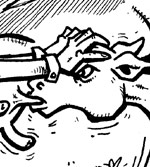The Potential Side Effects of the Arnica Montana Plant
| Share on Facebook | Share on Twitter | Share on Google+ |
What is Arnica montana?
Arnica montana, also known by the names leopard's bane, wolf's bane, mountain arnica, mountain tobacco or simply arnica, is a flowering plant mostly found in Europe which has been used as an herbal remedy for pain and bruise management.
Uses of Arnica montana
The arnica herb has been widely used for various medicinal purposes such as reducing swelling, reducing bruising and pain caused by bruises, alleviating muscle or joint pains, and as remedy for insect bites and other skin irritations.
Arnica and Surgery
Several research studies have suggested that homeopathic doses of arnica can relieve pain after surgery. It has also been seen to reduce hematoma and bruising after surgery and promotes faster post-operative recovery.
Arnica for Labour
Arnica has been popularly used as a homeopathic remedy for relieving pains caused by childbirth. It is usually given at the beginning of labour to help muscles function effectively and to prepare the body for the rigors of labour and childbirth. Homeopathic arnica has been seen to relieve the discomfort caused by strained muscles and physical exertion, as well as the haemorrhoidal problems which may be possible after childbirth.
Is Arnica safe?
Arnica is generally safe when used externally or topically, and in homeopathic doses. However, prolonged use of arnica (three weeks or more) can lead to skin irritations and other possible side effects which will be mentioned shortly. It is recommended for use to relieve pains, bruises and trauma, but it is most effective and safe when taken with caution and guidance from a professional.
Side Effects of Arnica
Arnica has been seen to be safe when used in diluted or homeopathic doses for a maximum of two weeks under constant supervision of a doctor or health care professional. However, at extremely higher doses, arnica montana can lead to very serious side effects and even death. Possible side effects of high arnica dosage include stomach discomfort, nausea and vomiting, as well as liver and kidney damage and organ failure.
Skin rashes, lesions of the mouth and eczema might occur in some people as a result of allergies. Topical arnica should never be used on open wounds or anywhere near the eyes and mouth. There have also been reported cases of mouth ulcers caused by arnica-containing mouthwash.
Other less probable side effects of increased arnica doses taken orally include irregular heart rhythm, high blood pressure, rapid heartbeat and heat failure. Theoretically, arnica can increase the possibility of bleeding. If you have a history of diabetes or have used anticoagulant or antiplatelet drugs, always consult a doctor before taking arnica, even at homeopathic doses.
Arnica and Pregnancy
The use of arnica during pregnancy is not highly recommended. Though homeopathic arnica can be beneficial for minimizing some pregnancy discomfort, large arnica doses have the ability to stimulate the uterus and spontaneously cause miscarriage or a possible premature delivery. Thus, when using arnica for homeopathic reasons, it is best to consult your homeopathic practitioner and your physician.
The medicinal benefits of Arnica for relieving pain and trauma have been attested to by a good number of people. The side effects of Arnica Montana only stem from improper dosage or use, it is relatively safe to use if done so with supervision.
-
Skin CareMen Skin Care
-
Free ResourcesFree eBooks
-
Be careful in reading health books. You may die of a misprint.Mark Twain
-
What We RecommendIf you do an analysis of the ingredients in a bottle of
 Total Balance and compare with other products you will find that it provides exceptional value for money…even against simple mass produced products with lower bottle costs.
Total Balance and compare with other products you will find that it provides exceptional value for money…even against simple mass produced products with lower bottle costs.
-



















